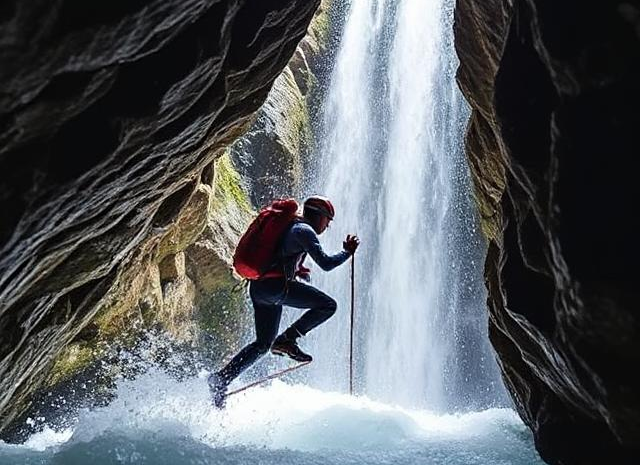
The Role Of Travel Insurance In Adventure Sports And Activities
Travel insurance plays a crucial role when engaging in adventure sports and activities, as these types of activities often come with higher risks and the potential for injuries or accidents. Here’s how travel insurance can help and what to consider when participating in adventure sports:
1. Coverage for Injuries and Medical Expenses
- Medical Coverage: Standard travel insurance may not cover injuries resulting from high-risk adventure sports. However, many insurers offer specialized policies or add-ons that provide coverage for medical expenses incurred during activities like skiing, snowboarding, bungee jumping, scuba diving, rock climbing, or zip-lining.
- Emergency Medical Evacuation: If you are injured in a remote area or where medical facilities are lacking, travel insurance can cover the costs of evacuation to a hospital or home, especially for serious injuries. Medical evacuation is often a crucial part of adventure sports insurance.
2. Adventure Sports Coverage Add-ons
- Specialist Coverage: Since not all policies automatically cover adventure sports or high-risk activities, it’s important to purchase specific adventure sports coverage. Many insurers offer this as an add-on to a standard travel insurance policy. This coverage may include:
- Accident coverage (for injury or death)
- Medical expenses related to adventure activities
- Evacuation and repatriation if needed
- Search and rescue costs (in case of emergencies like getting lost or trapped)
3. Trip Cancellation or Interruption
- Trip Cancellations Due to Injury: If you are injured and cannot continue with your adventure activities or even complete your trip, trip cancellation insurance can help reimburse your non-refundable trip costs, such as flight tickets, accommodation, and prepaid bookings.
- Trip Interruption: If you have to interrupt your trip due to an injury, illness, or other emergency, some policies may cover costs for rescheduling or returning home early.
4. Protection for Equipment
- Sports Equipment Coverage: Many adventure sports require expensive gear, such as ski equipment, bicycles, or cameras for underwater photography. Travel insurance can cover the loss, theft, or damage of your equipment, either during travel or while engaging in the sport itself.
- Rental Equipment Coverage: If you’re renting equipment (like a snowboard or surfboard), some policies cover the loss or damage of the rental gear as well.
5. Liability Coverage
- Third-Party Liability: In some cases, you might be responsible for causing injury to another person or damaging their property during an adventure activity. Some travel insurance policies offer personal liability coverage, which protects you from legal or financial liabilities that arise from these types of accidents.
6. Exclusions to Be Aware Of
- High-Risk Activities: Not all adventure sports are automatically covered by insurance, and there may be specific exclusions. For instance, activities such as base jumping, skydiving, or extreme mountaineering may be excluded from standard coverage unless specifically mentioned.
- Pre-existing Medical Conditions: If you have a pre-existing medical condition that could affect your participation in certain adventure activities, you may need to declare it when purchasing insurance. Some policies may not cover injuries related to pre-existing conditions, while others offer specific coverage for them.
7. 24/7 Assistance
- Emergency Support: Many travel insurance providers offer 24/7 assistance for emergencies. If you’re injured during an adventure sport and need urgent medical attention, your insurer’s emergency assistance line can help direct you to the nearest facility or assist with getting you the care you need.
8. Peace of Mind
- Psychological Protection: Having travel insurance that covers adventure sports can give you peace of mind while participating in high-risk activities. Knowing that you’re covered in case something goes wrong allows you to focus on enjoying the experience rather than worrying about potential accidents.
9. Policy Customization
- Tailored Insurance Plans: Depending on the specific adventure sport or activity you’re planning, you can often customize your travel insurance policy. For example, some insurers will let you select coverage based on the types of activities you’ll be doing, ensuring you’re only paying for coverage relevant to your trip.
Key Adventure Sports Typically Covered by Insurance:
- Skiing & Snowboarding
- Scuba Diving
- Mountain Climbing
- Bungee Jumping
- Surfing
- Paragliding or Hang Gliding
- Cycling or Mountain Biking
- Caving or Spelunking
How to Ensure Proper Coverage:
- Check Activity Exclusions: Always read the fine print and confirm that your chosen insurance policy covers the specific adventure sports you plan to participate in.
- Purchase Extra Coverage: If your activity is deemed high-risk, ensure you purchase the necessary add-ons or separate policies that offer broader coverage for these activities.
- Consider the Location: Depending on the region, medical facilities and emergency services may vary in quality and accessibility. Ensure that your insurance includes coverage for evacuation and medical care in remote or underserved locations.

